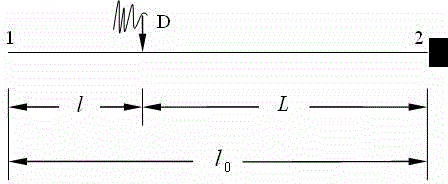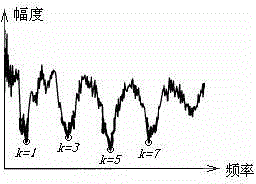Method for eliminating backscattering light influence in optical fiber sensor
A backscattered light, fiber optic sensor technology, applied in the direction of mitigating undesired effects, etc., can solve the problems of limited monitoring distance, affecting the accuracy of the position L of the disturbance point, and unable to obtain effective interference signals normally, so as to improve the monitoring distance. Effect
- Summary
- Abstract
- Description
- Claims
- Application Information
AI Technical Summary
Problems solved by technology
Method used
Image
Examples
Embodiment
[0051] This embodiment adopts as figure 2 The interference structure is shown. The light source used is the SO3-B super-superluminant diode (SLD) produced by the 44 Research Institute of the Electronics Group Corporation, with a working wavelength of 1310nm. Coupler 3 uses a 3*3 optical fiber fused tapered single-mode coupler that is equally divided, and coupler 4 uses a 2*2 optical fiber fused tapered single-mode coupler that is equally divided, both of which are produced by Wuhan Institute of Posts and Telecommunications. The optical fiber used in the optical fiber delayer is G652 type single-mode optical fiber. The photoelectric conversion device used in photoelectric conversion and information processing is an InGaAs photodetector model GT322C500 produced by 44. The feedback device 2 is made of evaporated aluminum film at the end of the optical fiber, and the reflectivity is greater than 95%. The phase modulator 9 connected in series at the tail end is made by winding ...
PUM
 Login to View More
Login to View More Abstract
Description
Claims
Application Information
 Login to View More
Login to View More - R&D
- Intellectual Property
- Life Sciences
- Materials
- Tech Scout
- Unparalleled Data Quality
- Higher Quality Content
- 60% Fewer Hallucinations
Browse by: Latest US Patents, China's latest patents, Technical Efficacy Thesaurus, Application Domain, Technology Topic, Popular Technical Reports.
© 2025 PatSnap. All rights reserved.Legal|Privacy policy|Modern Slavery Act Transparency Statement|Sitemap|About US| Contact US: help@patsnap.com



